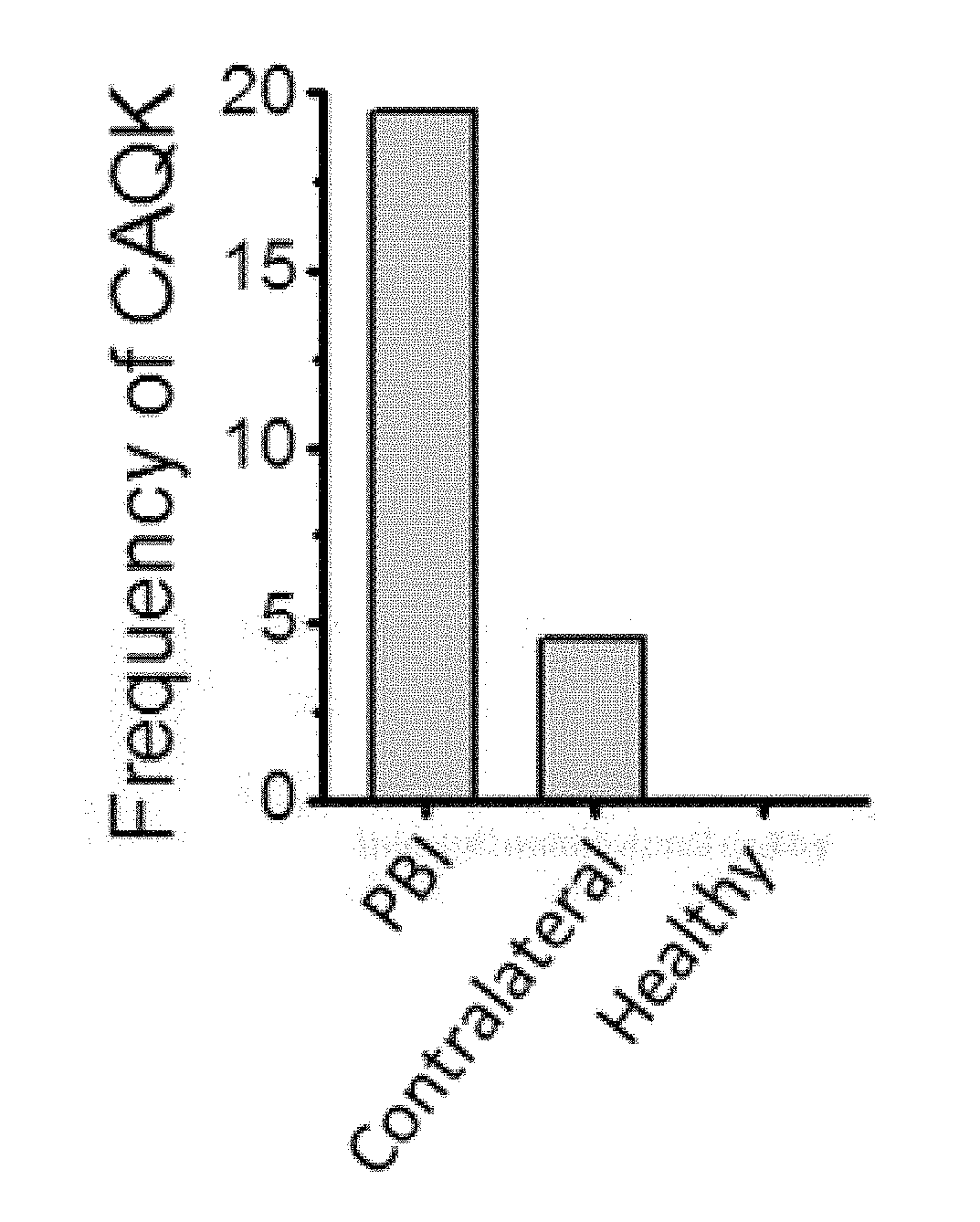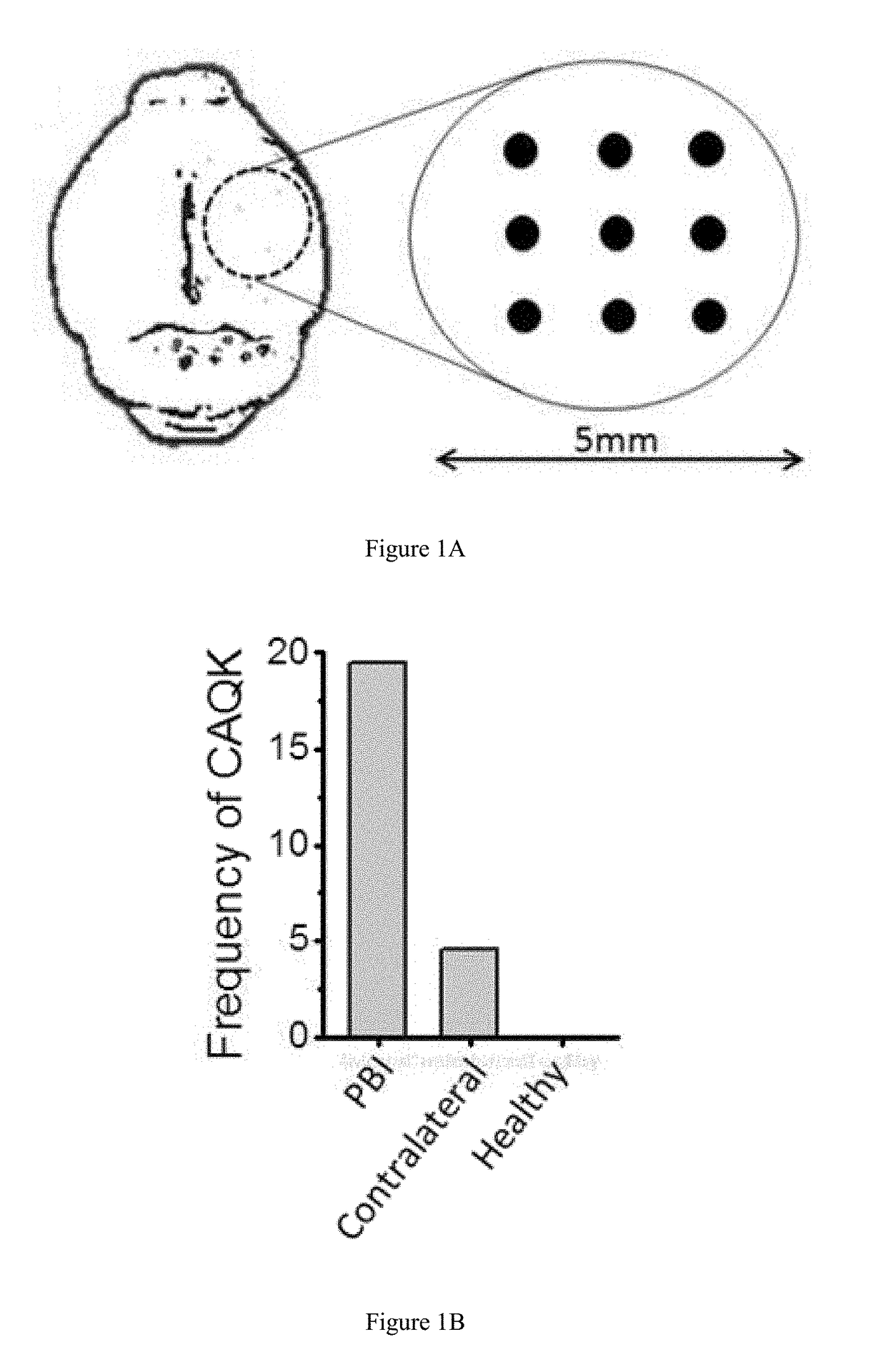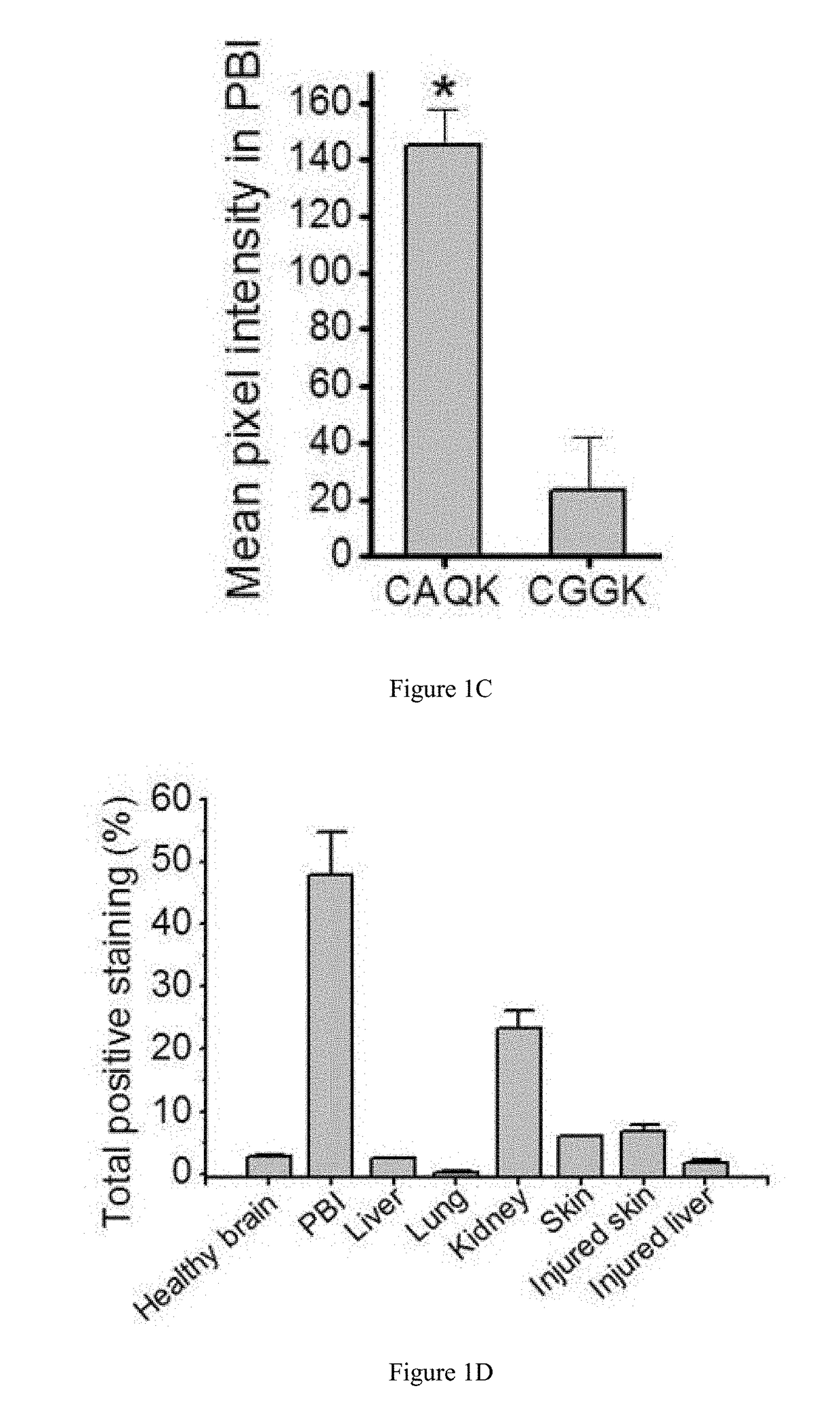Compounds and compositions for targeting brain injuries and methods of use thereof
- Summary
- Abstract
- Description
- Claims
- Application Information
AI Technical Summary
Benefits of technology
Problems solved by technology
Method used
Image
Examples
example 1
Isolation of Brain Injury Selective Peptide by Phage Display
[0273]Materials and Methods
[0274]Brain Injury Models. All animal experiments were conducted under an approved protocol of the Institutional Animal Care and Use Committee of Sanford Burnham Prebys Medical Discovery Institute. Eight to ten week old male BL6 mice were anesthetized with 4% isoflurane (Aerrane; Baxter, UK) in 70% N2O and 30% O2 and positioned in a stereotaxic frame. Using a head restraint, a 5-mm craniotomy was made using a portable drill and a trephine over the right parietotemporal cortex and the bone flap was removed. Penetrating brain injury model was used as described (Kielian et al., J. Immunol. 166:4634-4643 (2001); Kielian, J. Neuroinflammation 1:16 (2004)). Nine needle punctures using a 21G needle were made 3 mm deep according to a 3×3 grid, spaced 1 mm in width and 1 mm in height. For traumatic brain injury, a Controlled Cortical Impact (CCI) model was used as described (Krajewska et al., PLoS One 6:e2...
example 2
CAQK Homing is Specific to Sites of Brain Injury
[0286]Materials and Methods
[0287]Silver Nanoparticles Synthesis and Targeting. Silver nanoparticles (AgNPs) with PEG coating and peptide functionality were prepared as reported previously with some modifications (Braun et al., Nature Materials 13:904-911 (2014)). AgNPs of ˜20 nm diameter were synthesized by tannic acid reduction of silver nitrate in citrate solution (Dadosh, Mater Lett 63:2236-2238 (2009)). AgNO3 (252 mg) dissolved in 2.5 L water was stirred and heated to 60° C., then 50 mL water containing tannic acid (6.1 mg) and trisodium citrate dihydrate (1 g) was added. After 3 min the solution was brought to a boil for 20 min. Final optical density at 400 nm was ˜10. Lipoic PEG amine (LPN, 51.9 mg, 3400 g / mol, Nanocs) was reduced in 84 mM tris-carboxylethyl phosphine (TCEP pH 7.0, Sigma) in 4.1 mL water for 3 h. AgNPs were portioned to 500 mL and heated to 50° C., then LPN solution (0.79 mL) was added, followed by 0.25 mL 0.5 M ...
example 3
CAQK Peptide Interacts with Component of the Brain ECM
[0292]Materials and Methods
[0293]Affinity Chromatography and Proteomics. For identifying CAQK binding proteins, mouse brains with brain injury were collected 6 hrs after injury. Using liquid nitrogen, the brains were crushed and ground into powder using a mortar and pestle. Next, brain tissue was lysed in PBS containing 200 mM n-octyl-beta-D-glucopyranoside and protease inhibitor cocktail (Roche) as described (Teesalu et al., PNAS 16157-16162 (2009)). The cleared lysate was loaded on to CAQK or control peptide (CGGK) coated Sulfolink-agarose beads (Pierce, Waltham, Mass.) and incubated at 4° C. for 3-4 hrs. The column was washed with wash buffer (75 mM octyl-beta-D-glucopyranoside and protease inhibitor cocktail in PBS) followed by washing with 0.5 mM control peptide in wash buffer to remove nonspecifically bound proteins. The bound proteins were eluted with 2 mM free CAQK peptide. The eluted factions were pooled, their protein c...
PUM
| Property | Measurement | Unit |
|---|---|---|
| Time | aaaaa | aaaaa |
| Time | aaaaa | aaaaa |
| Time | aaaaa | aaaaa |
Abstract
Description
Claims
Application Information
 Login to View More
Login to View More - Generate Ideas
- Intellectual Property
- Life Sciences
- Materials
- Tech Scout
- Unparalleled Data Quality
- Higher Quality Content
- 60% Fewer Hallucinations
Browse by: Latest US Patents, China's latest patents, Technical Efficacy Thesaurus, Application Domain, Technology Topic, Popular Technical Reports.
© 2025 PatSnap. All rights reserved.Legal|Privacy policy|Modern Slavery Act Transparency Statement|Sitemap|About US| Contact US: help@patsnap.com



